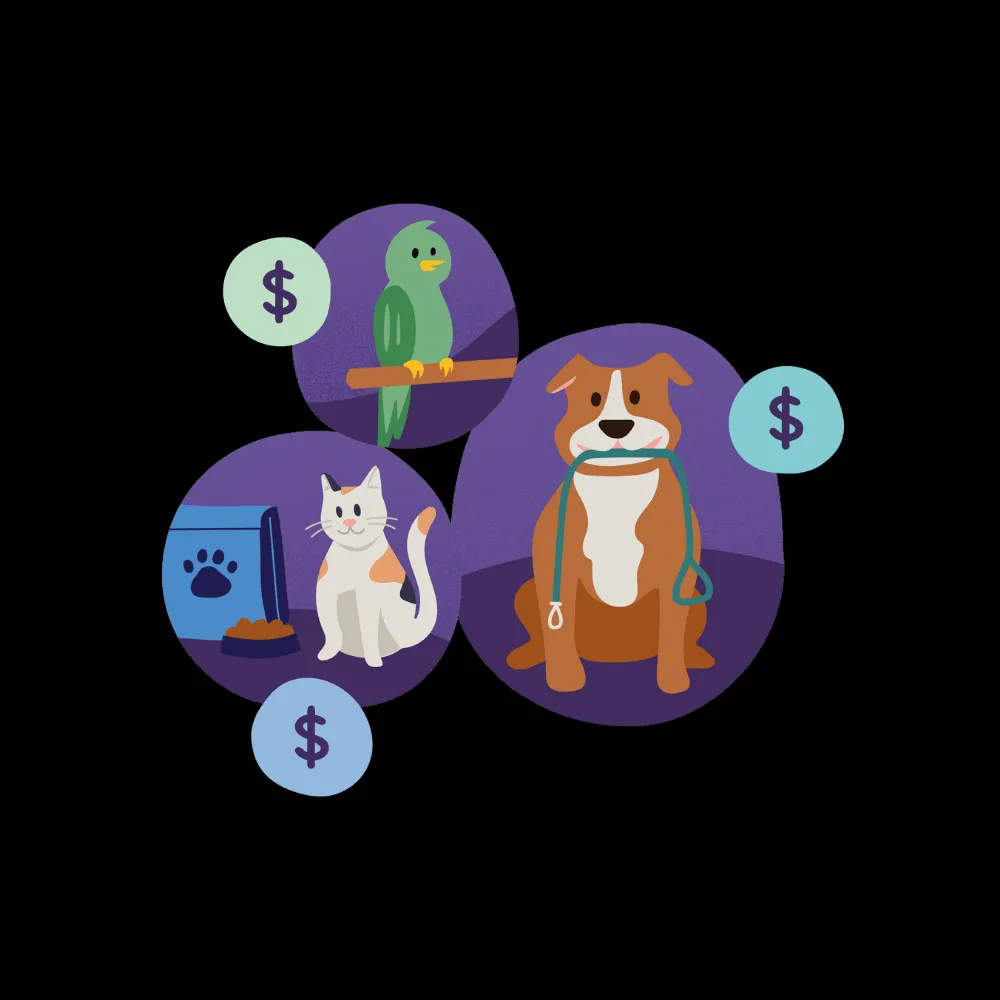Embarking on the journey to start a Pet Walking Business is an exciting venture that promises not only a fulfilling career working with animals but also the independence of being your own boss. The allure of spending your days in the company of beloved furry companions while building a profitable enterprise is strong, yet the path to establishing a successful pet walking business requires careful planning and execution. This guide compiles essential insights and practical knowledge gleaned from years within the pet care industry, offering you a robust foundation to transform your passion into a thriving profession.
In today’s diverse pet care landscape, professional dog walkers and pet sitters come in many forms, from individual operators serving local neighborhoods to large companies utilizing mobile apps for on-demand services. Understanding your vision for your unique pet walking business is the critical first step towards setting actionable goals and developing a strategy to achieve them. This resource aims to provide you with all the necessary information to get your new venture up and running, ensuring you’re well-equipped to navigate the challenges and capitalize on the rewarding opportunities ahead.
The Role of a Professional Pet Walker and Sitter
A professional pet walker’s primary responsibility transcends simple walks; it encompasses the paramount safety and well-being of every animal under their care. From the outset, prioritizing safety means being insured and bonded by a credible insurance company. [cite: https://dogcarestory.com/pet-minding-insurance/] This crucial step not only protects your pet walking business but also provides peace of mind for clients entrusting their cherished pets to you. Additionally, educating yourself on pet first aid and emergency protocols is non-negotiable, preparing you for unforeseen circumstances.
While the dream of caring for pets for a living is appealing, the reality involves a dynamic and often demanding schedule. Your days will be in constant motion, frequently outdoors, and will require visiting various client residences, leading to significant travel. This is a physically demanding job that may require you to work in less-than-ideal weather conditions, ensuring pets receive consistent care. Juggling multiple walks, client communications, and varying requests can be challenging, but this unpredictable nature can also be incredibly inspiring, offering new hurdles to overcome daily.
Maintaining professionalism is vital, even on tough days. Punctuality, completing agreed-upon services, and a positive attitude towards both pets and their owners are essential. Seemingly small instances, like impatience with a pet or a delayed client update, can erode trust. Building and maintaining strong client relationships and loyalty is key for any pet walking business, encouraging recommendations that fuel growth more effectively than any marketing campaign. Pet parents seek professional, responsible, and compassionate care, often preferring a local, reliable service over larger, less personalized options.
Defining Your Pet Walking Business: Services, Service Area, and Pricing
The services your pet walking business offers, its operational scope, and your pricing strategy form the core components of your revenue generation and daily operations. Careful consideration of these elements is paramount for your business’s initial and long-term success.
What Services Will Your Pet Walking Business Offer?
When starting, it’s recommended to keep your service offerings as straightforward as possible. While enthusiasm might lead you to list every conceivable service, a complex menu can confuse both you and your clients. Focus on a few core services and excel at them before gradually introducing more specialized options.
Common services include:
- Dog walking (30, 45, 60-minute options)
- Dog running or hiking
- Dog park visits
- Pet sitting (for various animal types and durations)
- Overnight stays
- Medication administration
- Litter box cleaning
- Additional home services (watering plants, collecting mail)
- Pet taxi or wedding attendant services
Where Will Your Pet Walking Business Operate?
Deciding on your service area is heavily influenced by your location. In large metropolitan areas, attempting to cover an entire city is impractical and inefficient, leading to excessive travel time and exhaustion. Starting small and expanding organically with client needs is often the most sustainable approach. It’s crucial to calculate travel time and associated expenses for each client to ensure profitability and avoid overextension, which can compromise service quality.
Market research is your best ally here. Analyze your competition’s service areas. If an area is densely populated with high demand and low competition for a pet walking business, focus your efforts there. Conversely, if demand is low or competition high, consider exploring underserved nearby areas where your services might be more sought after.
How to Price Your Pet Walking Business Services
Pricing is a significant factor for prospective clients. Your pet walking business needs an easy-to-understand and transparent pricing structure, clearly displayed on your website. Any additional fees, such as late booking or extra pet charges, must be disclosed upfront to prevent misunderstandings and build trust. [cite: https://dogcarestory.com/dog-walking-business-prices/]
Key factors in setting your rates include:
- Services Offered: Simple tiered options (e.g., 30, 45, 60-minute walks).
- Location: Average service costs vary significantly by region.
- Competition: Research what other local pet care companies charge.
- Expenses: Factor in labor, insurance, gas, marketing, and supplies.
- Desired Profit: Ensure rates cover all costs and allow for a sustainable income.
 A person walking three dogs on leashes through a suburban neighborhood, highlighting the common scene for a pet walking business.
A person walking three dogs on leashes through a suburban neighborhood, highlighting the common scene for a pet walking business.
Essential Startup Costs for Your Pet Walking Business
Compared to many other ventures, starting a pet walking business is relatively inexpensive, with initial investments potentially under $500, depending on your scope and resources. Understanding these typical expenses is crucial for budgeting.
Key startup costs include:
- Business Registration (LLC or DBA): $10-$500+. This determines your legal structure and allows you to operate under a business name.
- Business Bank Account: $0-varies. Essential for separating personal and business finances, simplifying expense tracking and taxes.
- Business License: $0-$400+. Requirements vary by state and local regulations. An Employer Identification Number (EIN), free from the IRS, is often needed for this.
- Professional Organizations: $0-$300+. Optional memberships (e.g., NAPPS, PSI) offer benefits like certifications and resources.
- Professional Pet Care Insurance: $129+. Absolutely vital for protecting your business, staff, and clients.
- Website Development: $15-$50+. Your digital storefront and primary client touchpoint. User-friendly builders like Wix or Squarespace can create a professional site quickly.
- Marketing Materials: $10+. Business cards, flyers, and magnets are cost-effective ways to advertise locally. Creating a free listing on platforms like Local Pet Care can also boost visibility.
- Pet First Aid Class: $50-$200+. Demonstrates commitment to pet welfare and provides critical skills. Pet Tech and PetProHero are valuable resources.
- Pet Walking Supplies: $5+. Essentials include poop bags, spare leashes, collapsible water bowls, and treats. Start with basics and expand as needed.
- Pet Walking Software: Time To Pet Free Trial. While not immediately mandatory, implementing efficient software early on streamlines scheduling, invoicing, client communication, and staff management, making your pet walking business more professional and manageable.
 A person studying various pet care books and a laptop, emphasizing continuous learning for a pet care professional.
A person studying various pet care books and a laptop, emphasizing continuous learning for a pet care professional.
Building Your Pet Walking Business Identity: Name, Logo, and Website
Your pet walking business name, logo, and website are the cornerstones of your brand identity, conveying its personality and values to potential clients. This is where your creativity shines!
Naming Your Pet Walking Business
Choosing a name is more complex than it seems. Consider:
- Services: Does the name clearly describe what you offer (e.g., dog walking, cat sitting)?
- Brand Image: Do you aim for upscale, playful, or medically-focused?
- Expansion: Will the name accommodate future growth into new services or markets?
Crucially, verify the name’s availability across trademarks, domain names, and social media handles to ensure uniqueness and avoid confusion. Checking for pet walking business names can provide inspiration and help avoid common pitfalls.
Designing Your Pet Walking Business Logo
Your logo will appear on all marketing materials and your website, so it must effectively represent your brand. If professional design assistance isn’t immediately feasible, platforms like Fiverr or 99designs offer affordable graphic design services. Free tools like Canva also enable those with some design experience to create a professional-looking logo.
Creating Your Pet Walking Business Website
Your website serves as your digital storefront and often forms clients’ first impression of your service. It must be visually appealing, user-friendly, and mobile-responsive. Key pages to include are a Homepage, About Us, Services, Service Area, FAQ, Reviews/Testimonials, Blog, Policies, Job Openings, and a Contact Page. These elements provide essential information and multiple avenues for prospective clients to engage with your pet walking business.
 A graphic displaying various rates for pet sitting services, indicating pricing considerations for a pet care business.
A graphic displaying various rates for pet sitting services, indicating pricing considerations for a pet care business.
Establishing Operations: Contracts, Procedures, and Policies for Your Pet Walking Business
Well-defined contracts, procedures, and policies are essential for the professional operation of your pet walking business. They set clear expectations for clients and streamline your daily activities in what can often be a demanding industry.
Pet Walking Insurance
As previously highlighted, securing comprehensive pet minding insurance is not just a recommendation but a necessity. [cite: https://dogcarestory.com/pet-minding-insurance/] It protects your business from unforeseen incidents and is a major selling point for clients who prioritize the safety of their pets and homes.
Pet Walking Contracts
Detailed dog walking contracts are crucial. These legal documents should outline the scope of services, responsibilities of both the client and the provider, and specific terms of engagement. While sample agreements are useful, always have your attorney review and approve all contracts before implementation to ensure they meet legal standards and protect your business adequately.
Cancellation Policy
Cancellations are inevitable in any service-based business. A clear, enforceable cancellation policy is vital to ensure your time and potential revenue are protected, especially for last-minute changes. This policy should be communicated upfront to clients to avoid confusion and dissatisfaction, emphasizing that your pet walking business values both client flexibility and your professional commitment.
Meet and Greets
Meet & Greets provide an invaluable opportunity for new clients to meet you and learn about your pet walking business. This initial interaction is critical for building rapport and trust. During this meeting, review company policies, service agreements, and answer any client questions. Whether conducted in person or virtually, clearly outlining what to expect from the Meet & Greet ensures a smooth and productive interaction.
Certifications for Pet Walking Professionals
While not always a legal requirement, obtaining certifications demonstrates your dedication and expertise within the pet care industry. Certifications, such as those in pet first aid and CPR, provide invaluable skills that can literally save an animal’s life. They also serve as a powerful marketing tool, helping your pet walking business stand out from competitors by assuring clients of your professional standards and commitment to pet welfare.
 A professional pet care provider interacting with a dog, representing quality service and client satisfaction.
A professional pet care provider interacting with a dog, representing quality service and client satisfaction.
Tools and Software for Your Pet Walking Business
Beyond leashes and poop bags, several less obvious but equally crucial tools are necessary for the success and scalability of your pet walking business. Efficient software is paramount for managing a growing company.
Pet Walking Software
The right pet walking software acts as a comprehensive field management tool, simplifying essential business functions. It enables efficient scheduling, invoicing, client management, and staff coordination, all accessible while you’re on the go. Such software, like Time To Pet, not only saves significant time but also enhances communication with clients and provides a more professional experience overall. Implementing this early can prevent headaches down the line, making transitions smoother as your pet walking business expands.
Accounting Software
Integrating quality accounting software, such as QuickBooks Online, with your pet walking software is highly recommended. This combination allows for seamless financial organization, real-time expense tracking, and streamlined accounting processes, ensuring your pet walking business remains financially sound and efficient.
 A person enthusiastically jumping with a dog in a park, symbolizing the joy and activity of a pet walking business.
A person enthusiastically jumping with a dog in a park, symbolizing the joy and activity of a pet walking business.
Are You Ready to Launch Your Pet Walking Business?
Yes, you absolutely are! This guide has provided a wealth of information and clarity on the essential aspects of starting your own pet walking business. The journey from passion to profession is demanding yet immensely rewarding, filled with opportunities to build lasting connections with both pets and their devoted owners. The detailed insights on planning, operations, and branding should significantly reduce the stress of the initial setup phase.
As you embark on this exciting venture, remember that the pet care industry is dynamic. Continuous learning and adaptation are key to sustained success. Regularly revisit this guide and explore additional resources from reputable platforms to stay informed about new trends and best practices. By embracing continuous improvement and focusing on providing exceptional service, your pet walking business is poised for remarkable growth and a deeply satisfying future.
